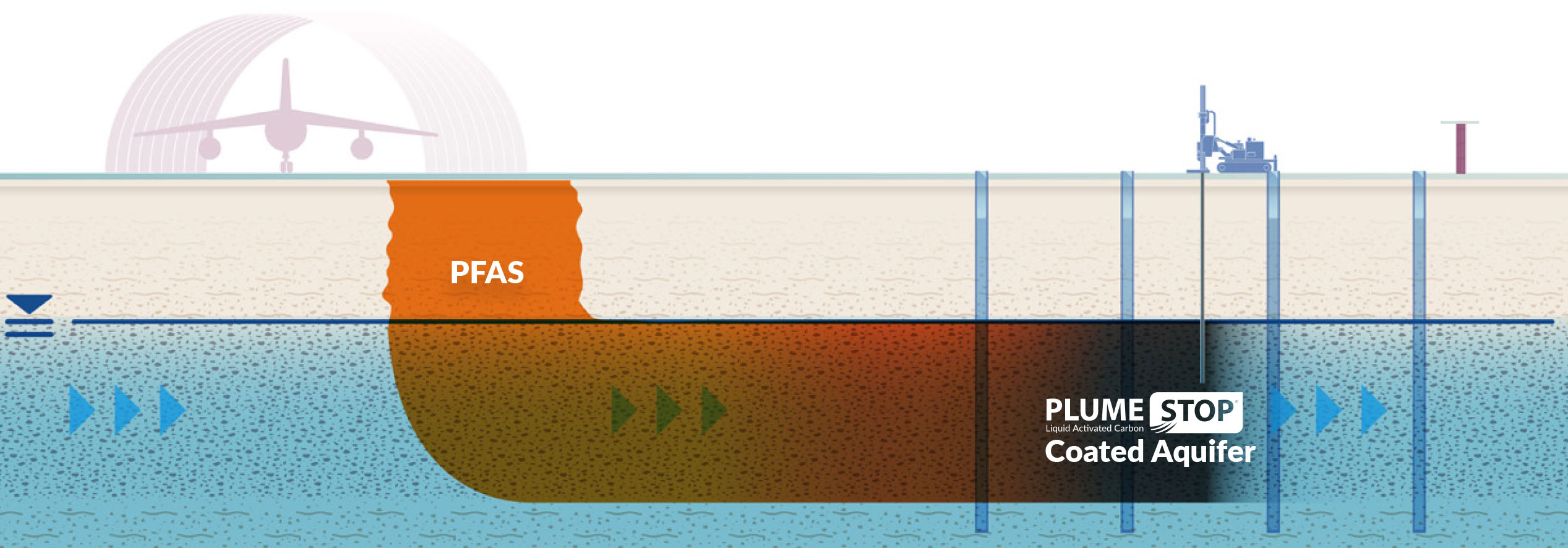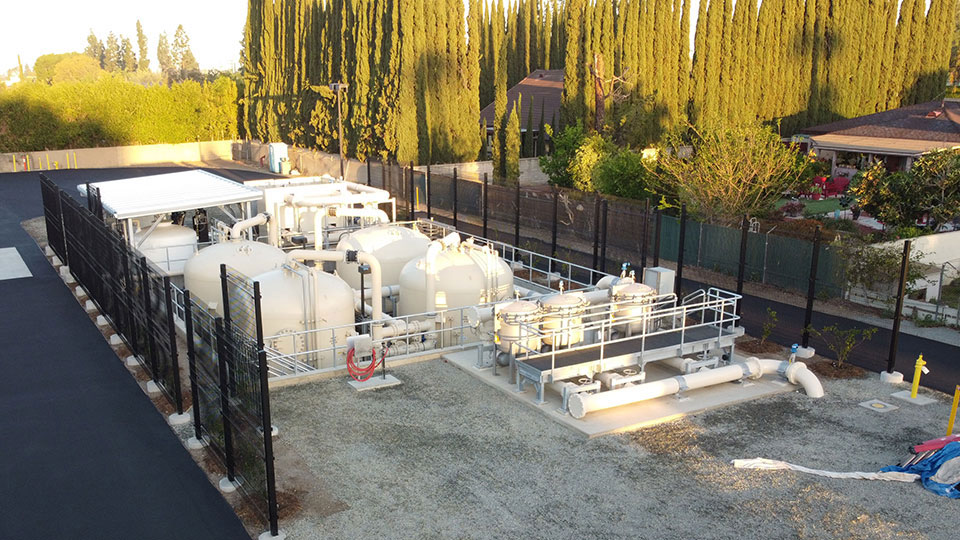Advanced Approaches for Effective PFAS Contamination Elimination
The relentless difficulty of PFAS contamination demands the exploration of sophisticated elimination methods that can successfully address these damaging materials. Cutting-edge modern technologies, such as advanced oxidation processes and different adsorption strategies, have emerged as promising solutions in mitigating PFAS from influenced atmospheres.
Comprehending PFAS Features
Although per- and polyfluoroalkyl substances (PFAS) have actually been widely made use of in various commercial and customer products because of their special homes, their perseverance in the atmosphere presents considerable difficulties to public wellness and safety and security. PFAS are a team of artificial chemicals characterized by a carbon-fluorine bond, among the greatest chemical bonds known, which adds to their exceptional stability and resistance to destruction. This security enables PFAS to accumulate in the environment and living microorganisms, bring about prospective unfavorable wellness impacts.
The hydrophobic and oleophobic nature of PFAS makes them specifically reliable in applications such as non-stick coverings, stain-resistant fabrics, and firefighting foams. Nevertheless, these very same buildings contribute to their environmental perseverance, as PFAS do not quickly break down via natural procedures. Their widespread use has led to ubiquitous contamination of water sources and dirts, complicating removal initiatives. Understanding the chemical residential properties of PFAS is essential for establishing effective approaches to handle and reduce their environmental effect. The unique attributes of these compounds demand a nuanced strategy to attend to the obstacles presented by their presence in ecosystems and prospective human direct exposure.
Ingenious Removal Technologies
The determination of PFAS in the atmosphere has stimulated the growth of ingenious removal innovations aimed at effectively removing these contaminants from impacted communities. Among one of the most promising techniques are sophisticated oxidation processes (AOPs), which use effective oxidants to damage down PFAS compounds into less hazardous compounds. AOPs can be tailored to target specific PFAS structures, improving their efficacy.
One more arising technology is making use of adsorption media, such as activated carbon and ion exchange resins, which can uniquely record PFAS from polluted water. These materials have actually revealed significant elimination efficiencies, although periodic substitute and regrowth are required to preserve performance.
Membrane filtration techniques, consisting of reverse osmosis and nanofiltration, are also getting traction in PFAS remediation. These techniques can properly divide PFAS from water, offering a viable solution for treating infected sources. Furthermore, thermal treatment techniques, such as incineration, can decompose PFAS right into non-toxic by-products, though they require careful administration to manage discharges.
Collectively, these cutting-edge removal innovations represent significant advancements in the ongoing fight against PFAS contamination, supplying different techniques to recover afflicted environments and protect public health.

Bioremediation Techniques
Bioremediation strategies provide a promising strategy to dealing with PFAS contamination navigate here by taking advantage of the all-natural capabilities of microbes to break down these consistent substances (m270 waste management). This approach entails making use of microorganisms, fungi, and other microbes that can metabolize or transform PFAS substances right into less dangerous results
Current advancements in molecular biology and ecological microbiology have improved our understanding of microbial communities and their prospective roles in PFAS degradation. Scientists are proactively discovering particular pressures of microorganisms, such as Pseudomonas and Bacillus, which have shown the capacity to break down particular PFAS compounds.
Sitting bioremediation strategies, where bacteria are promoted directly in contaminated settings, can be particularly efficient. This method frequently entails the application of nutrients or electron contributors to promote more tips here microbial growth and task. In addition, ex-spouse situ methods, such as bioreactors, enable for regulated conditions that can enhance degradation rates.
Regardless of the pledge of bioremediation, obstacles continue to be, consisting of the complicated nature of PFAS substances and the need for substantial field testing - m270 waste management. Proceeded study and growth will be crucial to improve these techniques and assess their performance in diverse environmental contexts
Adsorption and Purification Techniques
Resolving PFAS contamination usually includes utilizing adsorption and filtering approaches, which are developed to eliminate these persistent chemicals from water and soil. Among the various techniques, activated carbon adsorption is extensively utilized because of its high surface and porosity, allowing reliable trapping of PFAS particles. Granular turned on carbon (GAC) systems are especially favored for dealing with large volumes of contaminated water, while powdered turned on carbon (SPECIAL-INTEREST GROUP) can be made use of for smaller-scale applications.
Ion exchange resins likewise show assurance in PFAS removal, working by exchanging PFAS ions with less damaging ions in the water. This approach has actually demonstrated efficiency in concentrating PFAS compounds, promoting their subsequent removal. Additionally, membrane filtering methods, such as reverse osmosis and nanofiltration, run by using semi-permeable membranes to separate PFAS from water, properly click now reducing their focus.
While these methods are effective, they should be thoroughly chosen based on the certain PFAS substances present and the ecological context. Continuous advancements in products science and design are causing the development of novel adsorbents and filtering systems that enhance elimination performances and lower operational prices, therefore boosting general removal initiatives.
Regulatory and Plan Considerations
Just how can effective regulative frameworks improve the monitoring of PFAS contamination? Extensive plans are important to make sure a collaborated and durable reaction to the obstacles positioned by per- and polyfluoroalkyl substances (PFAS) Laws can establish clear standards for monitoring, reporting, and remediating PFAS-contaminated websites, promoting accountability among markets and public entities. (m270 waste management)

Furthermore, monetary motivations and grants can be incorporated into plans to urge the fostering of sophisticated remediation modern technologies. Policymakers must likewise prioritize study and advancement, guaranteeing that emerging techniques for PFAS elimination are verified and carried out successfully.
In addition, public awareness and interaction are important components of any regulatory approach, empowering areas to promote for their health and wellness. Inevitably, a well-structured regulatory environment will not only boost the management of PFAS contamination yet also advertise sustainable methods that shield future generations.
Verdict
In recap, the intricacy of PFAS contamination requires the adoption of innovative remediation methods. Cutting-edge modern technologies such as sophisticated oxidation processes, adsorption strategies, and membrane filtering have actually demonstrated substantial effectiveness in removing these persistent substances from infected water sources. Additionally, governing structures should advance to support the execution of these innovations, ensuring risk-free and efficient administration of PFAS pollutants. Continued r & d in this field stay essential to dealing with the difficulties posed by PFAS contamination.